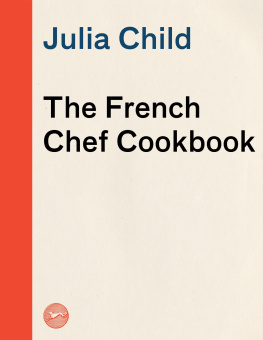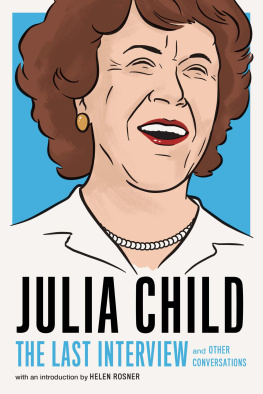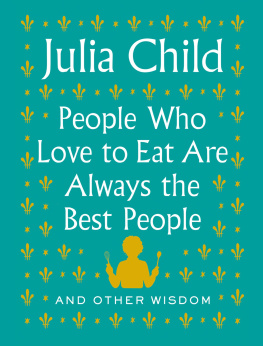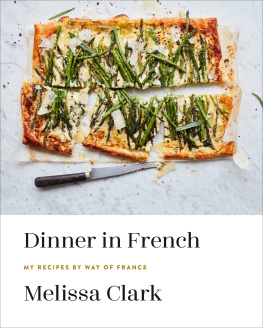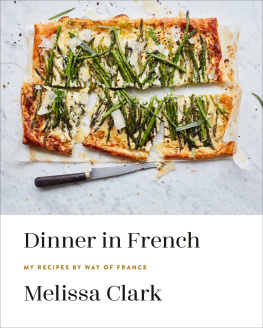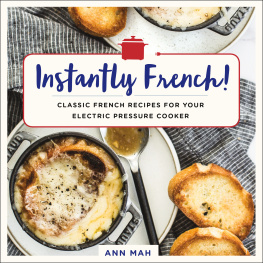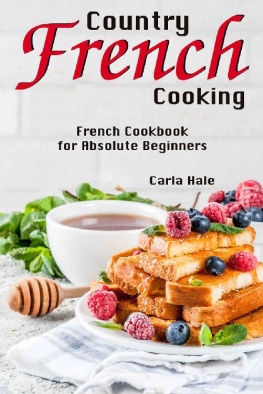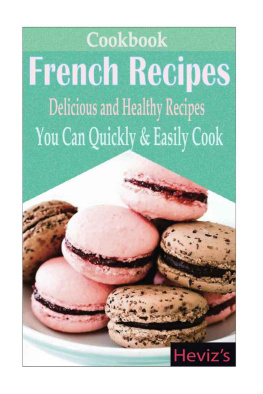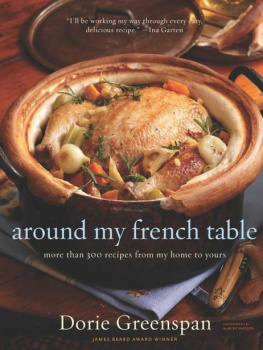Acknowledgments
To those unscreened wonders who kept the pots boiling:
The WGBH-TV Crew, whose cheerful appetites for hard work and French food never wavered.
Our Volunteer Cleaner-uppers, Bess Begien, Liz Bishop, Catherine Copeland, Bess Hopkins, and Mary OBrien, and to our Volunteer Office Managers, Gladys Christopherson, Pat Crawford, Amey De Friez, Helen Richmond, and Edith Seltzer, steady, capable, and invaluable partners.
Design Research Associates of Cambridge, who loaned us furniture, dishes, linens, and all manner of decorative pots and baubles for our first sixty-six programs.
The Cambridge Electric Company, whose friendly loft gave birth to those first programs, whose skilled mechanics repeatedly-unplugged the bouillabaisse remains from three floors of drainpipe, and all of whose people were kindly and helpful, from the cozy telephonists to the executives.
Francis Mahard, who designed and built our beautiful new kitchen.
The Boston Edison Company, who, with the Boyd Corporation, Frigidaire Sales Corporation, and Gray Sales, equipped our new studio with every conceivable electrical kitchen marvel.
S&H Green Stamps, whose initial donation enabled WGBH-TV to produce our first thirteen shows, and Sentry Stores, whose contribution brought us to Milwaukee.
Safeway Stores, Hills Brothers Coffee, Inc., and the Polaroid Corporation, whose generous public service grants to WGBH-TV made it possible for us to continue.
Russell Morash, our original producer-director, who gave The French Chef its visual techniques and so much of its inspiration, and David Griffiths, who ably continued as director.
Ruth Lockwood, my alter ego and producer, who worked tirelessly in the designing and staging of the programs, whose talent for turning a recipe into a drama is unique, and whose diplomatic and steady friendship have been basic to the whole enterprise.
Paul Child, the man who is always there: porter, dishwasher, official photographer, mushroom dicer and onion chopper, editor, fish illustrator, manager, taster, idea man, resident poet, and husband.
My love and thanks to you all, and
TOUJOURS BON APPTIT!
J. C.
ALSO BY JULIA CHILD
Mastering the Art of French Cooking, Volume One
(with Simone Beck and Louisette Bertholle)
Mastering the Art of French Cooking, Volume Two
(with Simone Beck)
From Julia Childs Kitchen
Julia Child & Company
Julia Child & More Company
The Way to Cook
Cooking with Master Chefs
In Julias Kitchen with Master Chefs
Julia and Jacques Cooking at Home
(with Jacques Ppin)
Julias Kitchen Wisdom
My Life in France
(with Alex Prudhomme)
About This Book
This book grew out of the educational television series The French Chef, which was designed to cover as much as possible of French cooking in several seasons of weekly half-hour programs. It ranges from sauces, stews, and meats to appetizers, vegetables, desserts, cakes and pastries, and from the verv simple to the fairly complicated. The book represents 119 programs, the complete television series as it then existed, and the recipes are printed in the order that the shows were produced. Although about one half were taken from Mastering the Art of French Cooking, some of the television recipes differ slightly from the book recipes: there is more than one good way of skinning a duck or cooking a ragot, and occasionally our TV time-limitations forced me to eliminate a frill or two. The rest of the recipes have evolved from studies for Volume II of Mastering the Art of French Cooking, and as I had to cook each dish six, eight, ten, or more times to test or to precook it for my half-hour program, television has provided an invaluable opportunity for me to prove them out to my satisfaction.
You will wonder why this book begins with the fourteenth show. This is because the first thirteen shows no longer exist. When we started, The French Chef was purely a local New England program, and before WGBH-TV realized duplicates were needed to serve other educational stations throughout the country the first thirteen tapes had worn out, and I am glad of it. Although they did possess some of the unpredictable quality of a contemporary happening, their demise allowed us to do over all but one of those recipes later on when we were more expert. Number 36 is missing, an unsatisfactory bche later redone as Number 73; Number 37 was a local New Years show which has disappeared from view, and for some technical television reason Number 82 has become Number 134.
Although the book is arranged according to the sequence of the television programs, it can be used like any book. In addition to the alphabetical index at the back, you can consult the subject guide at the front, where recipes are broken down into those familiar categories of soups, sauces, meats, and on to desserts.
A Note About the Author
Julia Child was born in Pasadena, California. She graduated from Smith College and worked for the OSS during World War II in Ceylon and China. Afterwards she lived in Paris, studied at the Cordon Bleu, and taught cooking with Simone Beck and Louisette Bertholle, with whom she wrote the first volume of Mastering the Art of French Cooking (1961), followed by Mastering the Art of French Cooking, Volume Two, with Simone Beck (1970).
In 1963 Bostons WGBH launched The French Chef, the television series that made Julia Child a national celebrity, earning her a Peabody Award in 1965 and an Emmy in 1966; in 1968 recipes from those early programs were published in The French Chef Cookbook. Other companion books to her television series were Julia Child & Company (1978), Julia Child & More Company (1979), Cooking with Master Chefs (1993), In Julias Kitchen with Master Chefs (1995), and Julia and Jacques Cooking at Home, with Jacques Ppin (1999). She published a major work, From Julia Childs Kitchen, in 1975, and her magnum opus, The Way to Cook, in 1989. In 2000 she gave us Julias Kitchen Wisdom, a handy distillation of her years of cooking experience.
Ms. Child died in August 2004.
The Fourteenth Show
CHICKEN BREASTS AND RISOTTO

The skinless and boneless meat from one side of a chicken breast is called a suprme. Never cooked in liquid because that would toughen it, the suprme is broiled, sauted, or simply poached in butter and seasonings in a covered casserole. As suprmes cook in only 6 to 8 minutes and may be served very simply, they make an exquisite quick meal.
preparing suprmes for cooking . Choose whole or half breasts from a 2- to 3-pound frying chicken. Slip your fingers between skin and flesh, and pull off the skin. Then cut against the ridge of the breastbone or the top of the rib cage to loosen flesh from bone. Cut through the ball joint of the wing where it joins the carcass, and continue down along the rib cage, pulling flesh from bone as you cut until you have freed the meat in one piece. Remove the wing and reserve it for something else. Underneath the suprme you will see a small white tendon that runs about two thirds of its length; cut along it for an inch or so, grab the end in a towel, and pull out the tendon against the dull edge of your knife. Trim off any jagged edges and flatten the meat lightly with the side of a heavy knife. The

